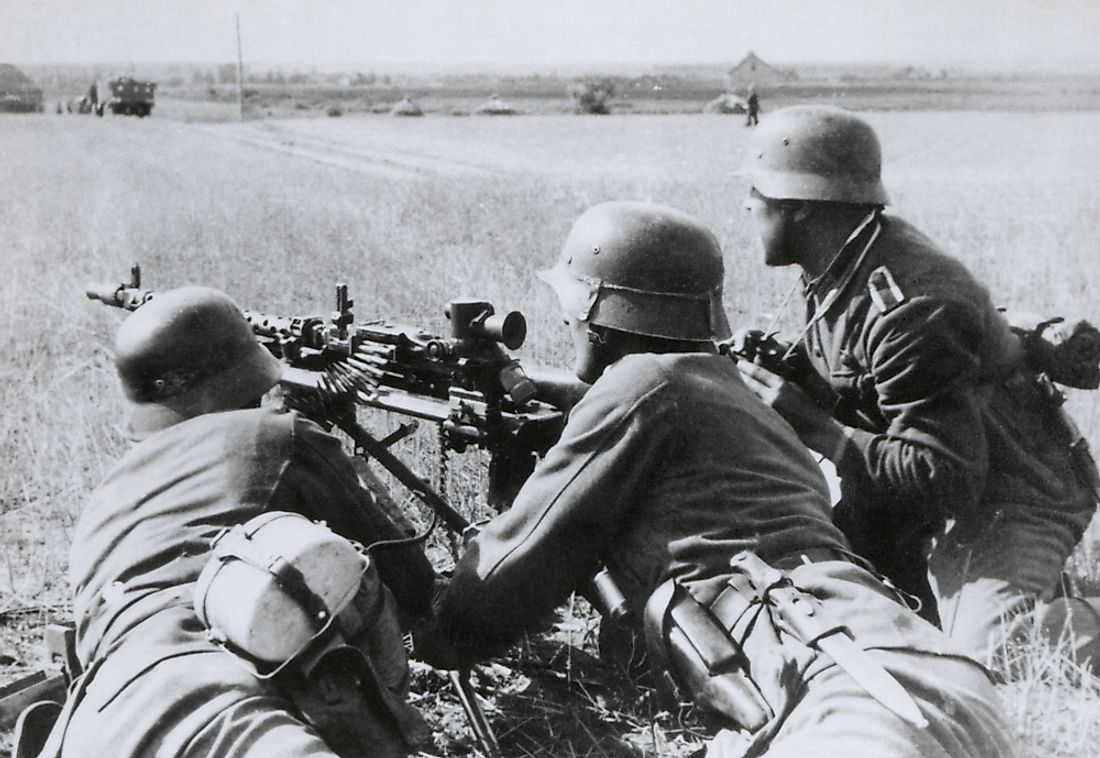What Was the Molotov-Ribbentrop Pact?

Overview
The Molotov-Ribbentrop Pact was a non-aggression agreement signed between the Soviet Union and Nazi Germany on August 23, 1939. The pact was signed in Moscow by foreign Ministers Joachim von Ribbentrop from Germany and Vyacheslav Molotov from the Soviet Union. Germany and the Soviet Union signed the non-aggression pact which assured each party that neither of them would attack one another. The pact also allowed for neutrality in case one country was attacked. The pact would ensure both countries were free from interference in their invasions of other countries.
Background
Germany and the Soviet Union had tense political relations after WWI which declined further with the rise of the Nazi regime. Despite their different political and economic ideologies and other various tensions between them, the Soviet Union sought to develop political and economic ties with Germany. The Soviet Union needed a market for its exports while Germany needed a source of raw materials, food, and military supplies. The size and location of Germany caused the country to be disadvantaged in the case of a war breaking out since supplies would not reach the country. The two political factions were brought together by the fact that both faced common threats to their power and had common enemies such as Poland. The signing of the Molotov-Ribbentrop pact was also inspired by the fears of French and Poland armies which were considered among the strongest in Europe at the time.
The Secret Protocol
The secret protocol was a part of the Molotov-Ribbentrop pact that divided Eastern Europe into German and soviet spheres of influence. The secret protocol was amended two more times on September 28th, 1939 and on January 10th, 1941. Soviet Union’s spheres of influence included a smaller part of Poland, Bessarabia, Latvia, Lithuania, and Estonia. Parties to the non-aggression pact denied the existence of the secret protocol for several years after the world war until 1989 when it was acknowledged and denounced again.
Termination of the Pact
The pact was established to last for a ten year period after which the period would be automatically extended for five years. However, the pact could be terminated after ten years once one of the parties sent a withdrawal notice one year before the end of the ten-year period. While the pact seemed to foster close relations between Germany and the Soviet Union, the Germans had a great mistrust of the actions and intentions of the Soviet Union. This lead to the termination of the pact on June 22, 1949. Hitler broke the non-aggression agreement by launching an attack against the Soviet Union under the code name Operation Barbarossa.
Impact of the Pact
The pact is regarded as the primary trigger for World War II. Since Germany was assured that the Soviet Union would not oppose its efforts of expansion, it became easier to invade Poland and engage the French and British in war. The Soviet Union also pursued its expansionist ambitions, confident that Germany would not pose any threat to its pursuits. However, pursuits by Soviet’s Joseph Stalin triggered Hitler’s mistrust leading to the attack on the Soviet Union in 1941. After the attack, relations between Germany and the Soviet Union deteriorated further with Soviet losing most of its acquired territories.











